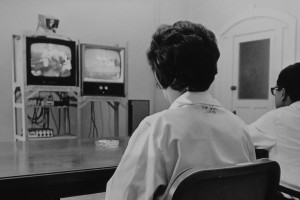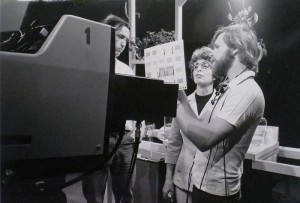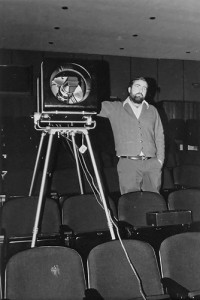This story is the 11th of a multi-part series on the history of the Health Center. The entire series can be read at the Health Center’s 50th Anniversary website.

The past 50 years have witnessed rapid advances in information technology and communications, and the Health Center has been at the forefront in every area.
Ralph Arcari, who retired as associate vice president for academic resources and services in 2005, oversaw the Health Center’s Lyman Maynard Stowe Library for 40 years. He presided over its transition from a paper-based system to a state-of-the-art “information commons,” where journals, databases and other library materials are available electronically, and can often be accessed from any location via the Internet.
“We were early adopters,” says Arcari. “We were one of the first to have an automated card catalog and one of the first to buy electronic versions of journals. The library has always been at the forefront of automation.”

When William Hengstenberg, director of Biomedical Media Communications, came to the Health Center in 1981, it had only a rudimentary videoconferencing system that used rooftop microwave dishes to send signals between McCook Hospital in Hartford and the Farmington facility. Today, the Health Center has state-of-the-art equipment, a broadcast-grade studio, a staff of 16 and a network that allows two-way videoconferencing across the state and around the world.
“We do about 10 videoconferences per day,” says Hengstenberg. “We regularly connect to other hospitals in the area and to the Storrs campus and can add in someone from California, China, Europe …”
Videoconferencing allows for enhanced collaboration among researchers at various locations. It also allows faculty to speak at far-flung professional conferences, without the expense and time drain of having to travel.

Hengstenberg’s department also does 10 to 12 webcasts a day, making lectures, grand rounds presentations and training programs available to students, faculty and, in some cases, other users. Lectures are recorded and made available online, so students can access them from computers or iPhones. It is an effective learning model for this generation of students.
The Health Center also makes its advanced communication capabilities available to other state agencies, to help those agencies be more efficient and cost-effective.
“We are the only ones in the state system to have this level of sophistication,” Hengstenberg says.
Follow the UConn Health Center on Facebook, Twitter and YouTube.



